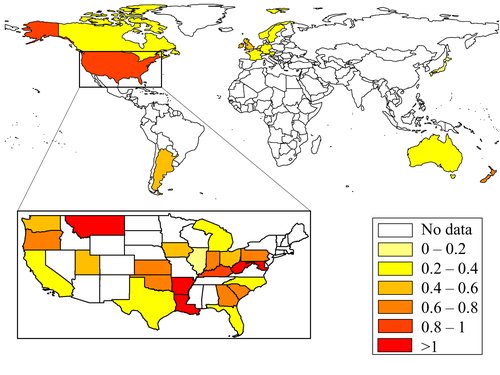-
Home
-
About JCTR
-
Gold Open Access
-
Issues
-
Editorial board
-
Author guidelines
-
Publication fees
-
Online first
-
Special issues
-
News
-
Publication ethics
-
Partners
-
Submit your manuscript
-
Submit your review report
-
Editorial Office
-

This work is licensed under a Creative Commons Attribution-NonCommercial 4.0 International License. ISSN print: 2382-6533 ISSN online: 2424-810X
Volume 4 Issue 2
Neonatal circumcision and prematurity are associated with sudden infant death syndrome (SIDS)
Eran Elhaik
Elhaik, J Clin Transl Res 2018; 4(2): 5
Published on: January 10, 2019
Abstract
Background: Sudden Infant Death Syndrome (SIDS) is the most common cause of postneonatal unexplained infant death. The allostatic load hypothesis posits that SIDS is the result of cumulative perinatal painful, stressful, or traumatic exposures that tax neonatal regulatory systems.
Aims: To test the predictions of the allostatic load hypothesis we explored the relationships between SIDS and two common phenotypes, male neonatal circumcision (MNC) and prematurity.
Methods: We collated latitudinal data from 15 countries and 40 US states sampled during 2009 and 2013. We used linear regression analyses and likelihood ratio tests to calculate the association between SIDS and the phenotypes.
Results: SIDS mortality rate was significantly and positively correlated with MNC. Globally (weighted): Increase of 0.6 (95% CI=0.01–0.1, t=2.86, p=0.01) per 1000 live-births SIDS mortality per 10% increase in circumcision rate. US (weighted): Increase of 0.1 (95% CI=0.03–0.16, t=2.81, p=0.01) per 1000 live-births unexplained mortality per 10% increase in circumcision rate. US states in which Medicaid covers MNC had significantly higher MNC rates (X ̃=0.72 vs 0.49; p=0.007) and male/female ratio of SIDS deaths (X ̃=1.48 vs 1.125; p=0.015) than other US states. Prematurity was also significantly and positively correlated with MNC. Globally: Increase of 0.5 (weighted: 95% CI: 0.02–0.086, t=3.37, p =0.004) per 1000 SIDS mortality per 10% increase in the prematurity rates. US: Increase of 1.9 (weighted: 95% CI: 0.06–0.32, t=3.13, p=0.004) per 1000 unexplained mortalities per 10% increase in the prematurity rates. Combined, the phenotypes increased the likelihood of SIDS.
Conclusions: Epidemiological analyses are useful to generate hypotheses but cannot provide strong evidence of causality. Biological plausibility is provided by a growing body of experimental and clinical evidence linking aversive preterm and early-life SIDS events. Together with historical and anthropological evidence, our findings emphasize the necessity of cohort studies that consider these phenotypes with the aim of improving the identification of at-risk infants and reducing infant mortality.
Relevance for patients: Preterm birth and neonatal circumcision are associated with a greater risk of SIDS, and efforts should be focused on reducing their rates.

DOI: http://dx.doi.org/10.18053/jctres.04.201802.005
Author affiliation
Department of Animal and Plant Sciences, University of Sheffield, Sheffield S10 2TN, UK
Email: e.elhaik@sheffield.ac.uk
Handling editor:
Michal Heger
Department of Membrane Biochemistry and Biophysics, Utrecht University, the Netherlands

